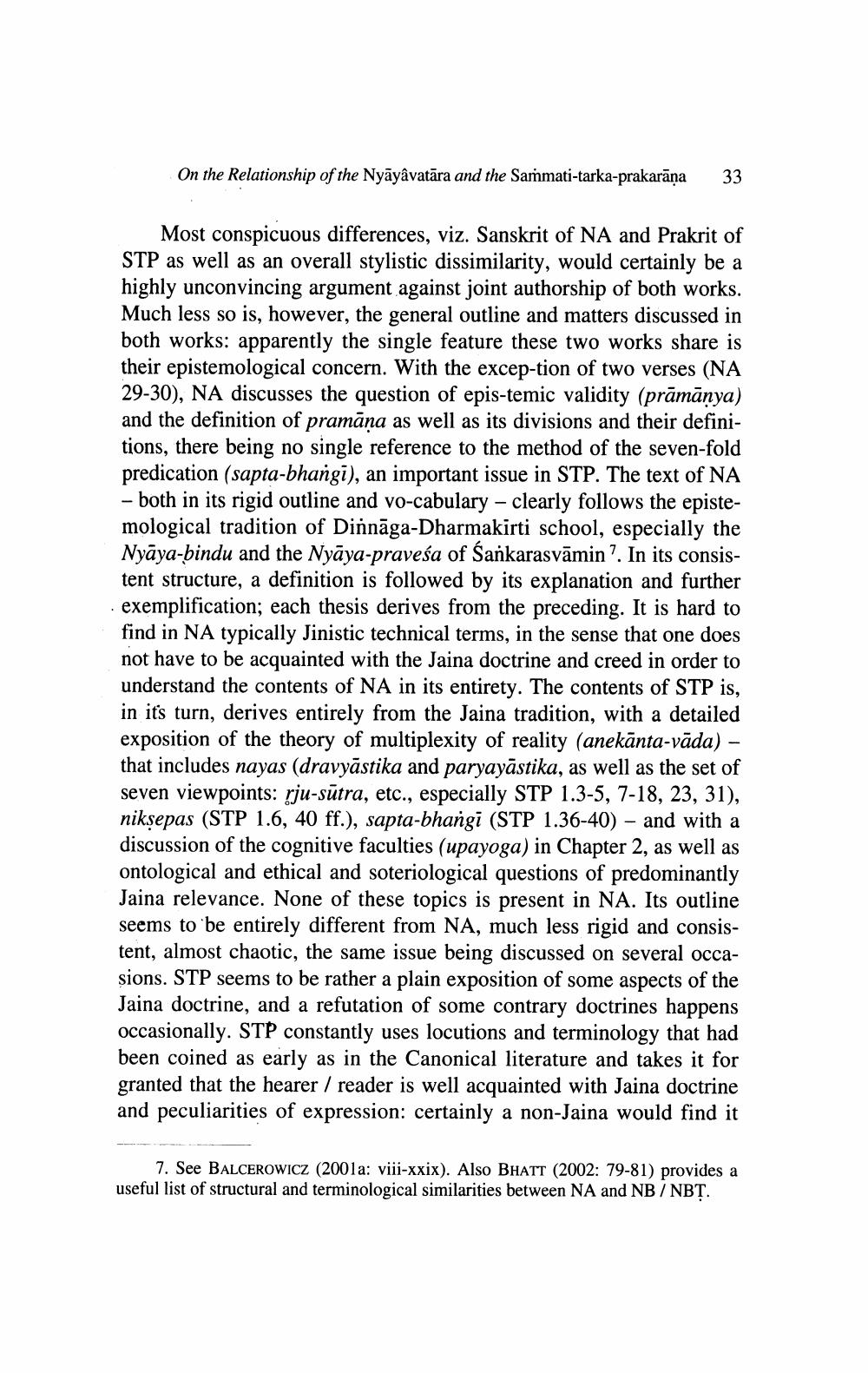Book Title: Indologica Taurinensia Author(s): Colette Caillat, Siegfried Lienhard, Irma Piovano, Saverio Sani Publisher: Comitato AIT View full book textPage 5
________________ On the Relationship of the Nyāyâvatāra and the Sammati-tarka-prakarāņa 33 Most conspicuous differences, viz. Sanskrit of NA and Prakrit of STP as well as an overall stylistic dissimilarity, would certainly be a highly unconvincing argument against joint authorship of both works. Much less so is, however, the general outline and matters discussed in both works: apparently the single feature these two works share is their epistemological concern. With the excep-tion of two verses (NA 29-30), NA discusses the question of epis-temic validity (prāmānya) and the definition of pramāna as well as its divisions and their definitions, there being no single reference to the method of the seven-fold predication (sapta-bhangi), an important issue in STP. The text of NA - both in its rigid outline and vo-cabulary - clearly follows the epistemological tradition of Dinnāga-Dharmakirti school, especially the Nyāya-bindu and the Nyāya-praveśa of Sankarasvāmin ?. In its consistent structure, a definition is followed by its explanation and further exemplification; each thesis derives from the preceding. It is hard to find in NA typically Jinistic technical terms, in the sense that one does not have to be acquainted with the Jaina doctrine and creed in order to understand the contents of NA in its entirety. The contents of STP is, in it's turn, derives entirely from the Jaina tradition, with a detailed exposition of the theory of multiplexity of reality (anekānta-vāda) - that includes nayas (dravyāstika and paryayāstika, as well as the set of seven viewpoints: rju-sūtra, etc., especially STP 1.3-5, 7-18, 23, 31), niksepas (STP 1.6, 40 ff.), sapta-bhangi (STP 1.36-40) - and with a discussion of the cognitive faculties (upayoga) in Chapter 2, as well as ontological and ethical and soteriological questions of predominantly Jaina relevance. None of these topics is present in NA. Its outline seems to be entirely different from NA, much less rigid and consistent, almost chaotic, the same issue being discussed on several occasions. STP seems to be rather a plain exposition of some aspects of the Jaina doctrine, and a refutation of some contrary doctrines happens occasionally. STP constantly uses locutions and terminology that had been coined as early as in the Canonical literature and takes it for granted that the hearer / reader is well acquainted with Jaina doctrine and peculiarities of expression: certainly a non-Jaina would find it 7. See BALCEROWICZ (2001a: viii-xxix). Also BHATT (2002: 79-81) provides a useful list of structural and terminological similarities between NA and NB /NBT.Page Navigation
1 ... 3 4 5 6 7 8 9 10 11 12 13 14 15 16 17 18 19 20 21 22 23 24 25 26 27 28 29 30 31 32 33 34 35 36 37 38 39 40 41 42 43 44 45 46 47 48 49 50 51 52 ... 56
